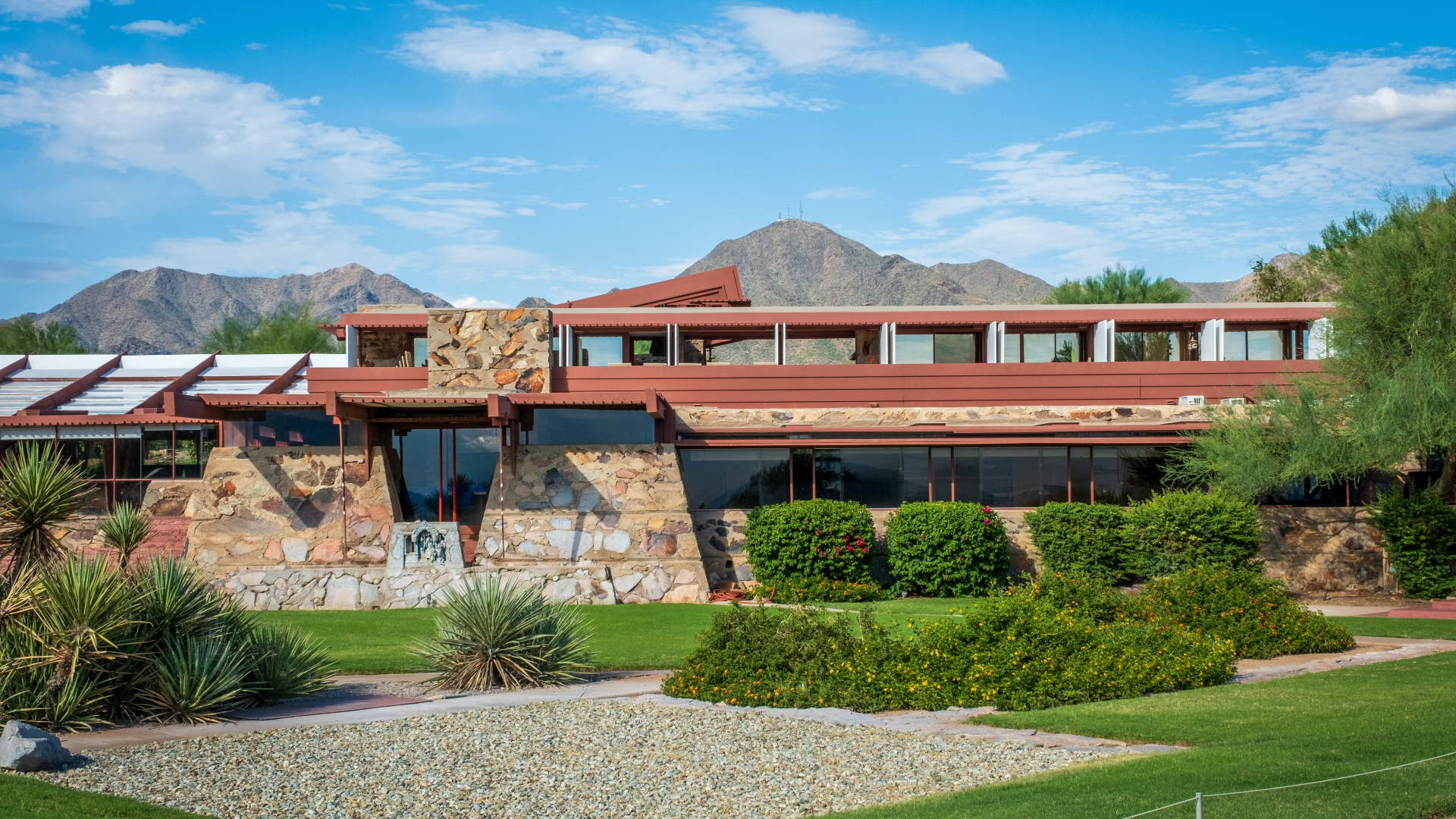
Situated in the McDowell Mountains near Scottsdale, Arizona, Taliesin West served as both Frank Lloyd Wright’s winter retreat and an educational hub for his architectural philosophy. This site embodies Wright's commitment to organic architecture through its seamless integration with the natural surroundings. Built mainly under Wright’s guidance along with contributions from his students from 1937 up until his death in 1959, this structure exemplifies how architecture can harmoniously coexist with nature.
One of the most notable features of Taliesin West The signature 'desert masonry' of this structure employs local stones and desert gravel combined with concrete to form the building’s distinctively rugged and textured exterior walls. These walls seem as though they emerge organically from their surroundings and significantly aid in managing the harsh desert conditions.
One of the most notable characteristics is the incorporation of canvas roofs. Initially crafted from canvas and later substituted with sturdier alternatives, these semi-transparent sections enable filtered daylight to illuminate the interior spaces, yielding a gentle, natural glow. The canvas, pulled taut across redwood structures, imparts an open, breezy ambiance that stands out against the robustness of the stone walls. This play between lighting and construction materials recurs consistently throughout the structure.
Are you an architecture enthusiast? These articles might pique your curiosity:
- In Paris, enter an apartment designed by Le Corbusier and lose yourself in the architect's universe.
- Brazilian architect Oscar Niemeyer’s 7 most breathtaking creations to explore globally
- Within the Japanese Alps, these villages maintain a distinctive architectural style.
In each space, nature and design blend seamlessly together.
The Garden Room serves as a key communal area, showcasing Wright's vision The design emphasizes the connection between indoor and outdoor areas. Large glass windows seamlessly connect to a terrace, merging the boundaries between external and internal environments. Characteristic sharp angles found in Wright’s subsequent projects are highlighted with built-in furniture and hearths made using local stone construction techniques.
Close by, the Drafting Studio, which serves as a center for all creative activities and education, keeps its original drafting tables and equipment intact. This area is bathed in natural light via expansive windows, offering an ideal setting for developing fresh architectural designs. The design of the studio fosters teamwork and communication, aligning with Wright’s educational philosophy.
Moreover, the Cabaret Theatre, a compact and cozy venue for performances, exemplifies the fusion of sound technology with architectural aesthetics. The distinctive angular layout of both seats and stage embodies Frank Lloyd Wright’s vision of fostering lively and captivating spaces. In tandem with this, the open-air Music Pavilion takes advantage of the inherent acoustic qualities of the nearby terrain. Here, stepped rows of seating made from the characteristic desert stone offer breathtaking views across the arid landscapes around them.
Preservation and legacy
Today, Taliesin West functions as the main headquarters. Frank Lloyd Wright Foundation And the School of Architecture at Taliesin continues to be preserved, ensuring the site remains intact for visitors to enjoy. experience Wright's architectural vision Firsthand, the website keeps inspiring architects and design aficionados globally, functioning as a dynamic showcase of organic architecture.


No comments:
Post a Comment